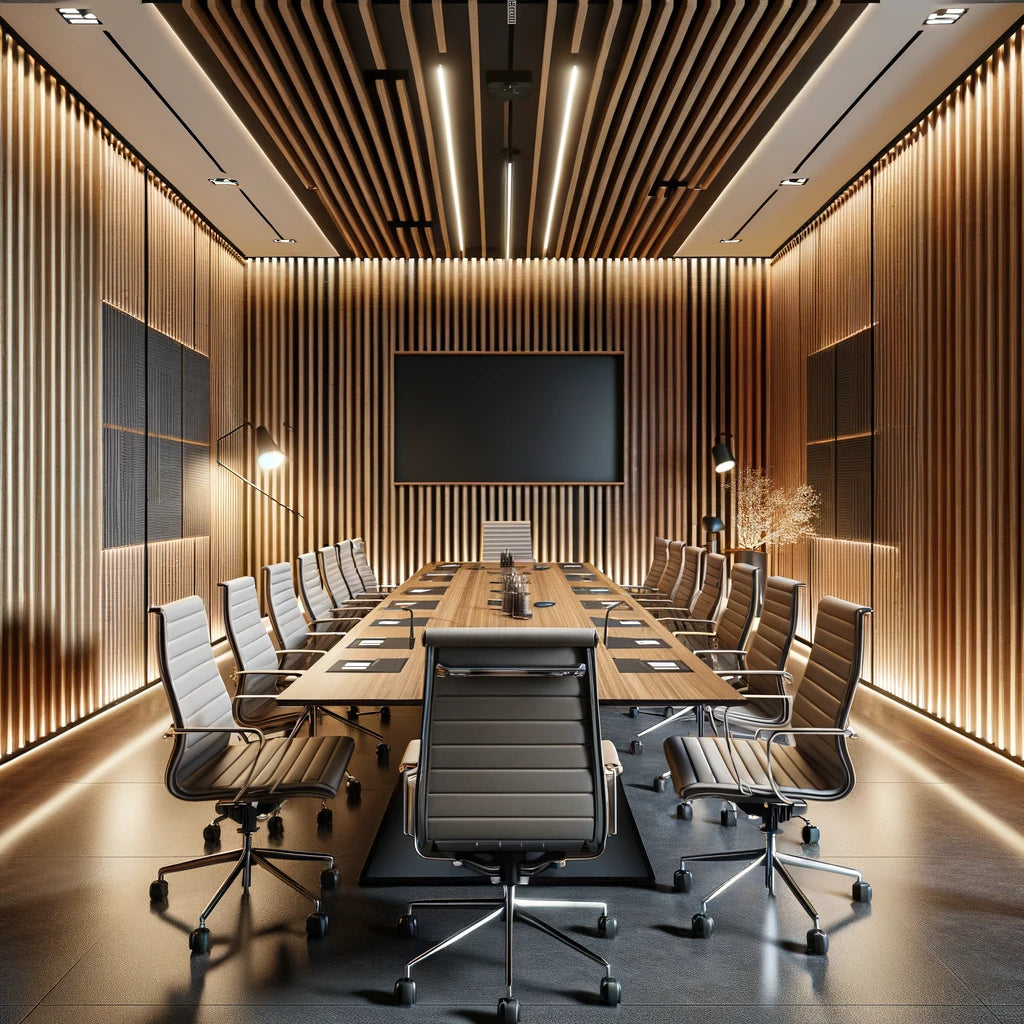Acoustical Wall Panels: Elevating Your Conference Space Beyond the Boardroom
Conference spaces are essential for any business, serving as the hub for meetings, presentations, and collaborative work. The design and functionality of these spaces significantly impact productivity and communication. One often overlooked aspect is acoustics. Poor acoustics can lead to distractions, misunderstandings, and a lack of focus. Acoustical wall panels offer a solution, providing both aesthetic appeal and functional benefits. In this guide, we’ll explore how to install acoustical wall panels in your conference space and provide recommendations and tips for achieving the best results.
Benefits of Acoustical Wall Panels for Conference Spaces
Why Choose Acoustical Wall Panels?
Acoustical wall panels are designed to absorb sound, reducing echo and noise levels in a room. This leads to clearer communication and a more pleasant environment. Here are some key benefits of using acoustical wall panels in your conference space:
- Enhanced Sound Quality: Improved acoustics ensure that everyone in the room can hear clearly.
- Aesthetic Appeal: Available in various designs, colors, and textures, these panels can enhance the overall look of your conference space.
- Easy Installation: With the right tools and instructions, installing acoustical wall panels is a straightforward process.
- Durability and Maintenance: These panels are built to last and are easy to clean and maintain.
Step-by-Step Guide to Installing Acoustical Wall Panels
Tools and Materials You'll Need
Before you begin, gather the following tools and materials:
- Acoustical wall panels
- Measuring tape
- Level
- Pencil
- Adhesive or nails
- Saw (if panels need cutting)
- Sandpaper
- Caulking gun
- Caulk
- Paint (if needed)
- Safety gear (gloves, goggles)
Step 1: Prepare Your Walls
Cleaning and Smoothing the Surface
Start by cleaning the walls where you plan to install the acoustical panels. Remove any dust, dirt, or grease to ensure the panels adhere properly. Use sandpaper to smooth out any rough spots or imperfections.
Measuring and Marking
Measure the dimensions of your wall and mark where each panel will go. Use a level to ensure your lines are straight. Accurate measurements and markings are crucial for a professional finish.
Step 2: Cutting the Panels
Measuring and Marking the Panels
Measure the acoustical wall panels to fit the dimensions you marked on the wall. Mark the panels with a pencil where they need to be cut.
Cutting the Panels
Using a saw, carefully cut the panels to the required size. Wear safety gear during this step to protect yourself from dust and debris.
Step 3: Applying Adhesive
Choosing the Right Adhesive
Select an adhesive suitable for the type of acoustical wall panels you are using. Some panels may require specific adhesives, so check the manufacturer's recommendations.
Applying the Adhesive
Apply the adhesive to the back of the wall panel in a zigzag pattern. Be generous but avoid using too much adhesive, which can cause the panels to slip or not adhere properly.
Step 4: Installing the Panels
Placing the Panels on the Wall
Carefully press the panel onto the wall, starting from the bottom and working your way up. Use a level to ensure the panel is straight. Press firmly to ensure good adhesion.
Securing the Panels
Depending on the type of acoustical wall panels and the adhesive used, you may need to secure the panels with nails or screws temporarily until the adhesive sets. Follow the manufacturer's instructions for the best results.
Step 5: Finishing Touches
Filling Gaps and Seams
Once all the panels are installed, check for any gaps or seams between them. Use caulk to fill these areas for a seamless look. Smooth the caulk with your finger or a caulking tool.
Painting (If Needed)
If your acoustical wall panels are paintable, consider adding a coat of paint to enhance their appearance. Choose a paint color that complements your conference room decor.
Final Inspection
After the panels are installed and any paint or caulk has dried, inspect your work. Ensure all panels are securely attached and that there are no visible gaps or imperfections.
Recommendations and Tips for Installing Acoustical Wall Panels
Tips for a Professional Finish
- Take Your Time: Rushing through the installation can lead to mistakes. Take your time to measure, cut, and apply each panel carefully.
- Use Quality Materials: Investing in high-quality acoustical wall panels and adhesive will result in a more durable and attractive finish.
- Seek Help If Needed: If you’re unsure about any part of the process, don’t hesitate to seek help from a professional or consult online resources.
Additional Recommendations
- Plan the Layout: Before starting the installation, plan the layout of your panels to ensure a balanced and symmetrical design.
- Test Acoustic Performance: After installation, test the acoustic performance of the room. Make adjustments if necessary to achieve the desired sound quality.
- Maintenance: Regularly clean the panels to maintain their appearance and acoustic performance. Follow the manufacturer's guidelines for cleaning and maintenance.
Invite the Reader to Explore Our Collection
Ready to transform your conference space with acoustical wall panels? Visit our website to explore our extensive collection of acoustical wall panels. Find the perfect style and design to enhance both the look and functionality of your conference room. Start your project today and experience the difference acoustical wall panels can make!

